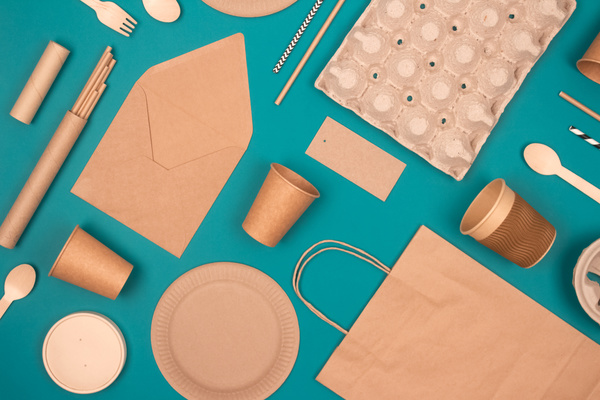
Using sustainable CPG packaging materials is now more important than ever. As more consumers become environmentally conscious, businesses strive to rethink how they are packaging their products.
Brands are committing to reduce waste by focusing on sustainability. Research shows 60% of companies are embracing full recyclability and significantly increasing the amount of recycled materials they use for packaging products.
Companies are constantly searching for sustainable packaging materials to use for CPG products. Here are five examples of some of the most efficient materials they are trying.
Seaweed
Seaweed fibers are being used as an alternative to paper and other packaging materials. This raw material may also act as a coating to replace petroleum-based food packaging.
If this option works, it may replace paper and cardboard for packaging, such as paper wraps, cardboard trays, and cartons. Seaweed is a natural material that is easy to recycle and will minimally impact the environment.
PaperFoam
PaperFoam is a material that is flexible and looks like polystyrene and traditional foam used in packaging. It derives from industrial starch that comes from tapioca, cellulose fibers, and potatoes.
Because of its composition, PaperFoam is much more eco-friendly than traditional foam. It can be molded into solid shapes that are lightweight, then used in a variety of CPG packaging.

Isaac Monte’s Leek Paper
As you might expect, leeks are used to make leek paper. Leeks create a large amount of waste when harvested. This results from cleaning them.
Isaac Monte observed the use of organic products in packaging materials that may or may not biodegrade. This problem is solved by using leek paper created from the waste product to wrap vegetables. It is completely biodegradable.
The use of leek paper can influence other similar products. This same process used for leeks can potentially be applied to other organic packaging materials.
Paptic Paper
Paptic paper is a CPG packaging material that may replace regular paper and plastics in the future. Though it is wood fiber-based, it contains stretch properties. This means you can use it like plastic wrapping or clingfilm.
It is heat-sealable, so it can be used for products that need to be wrapped or sealed in a bag. It is around 30% less than regular paper in weight, so it makes packages lighter. It can also be made by the same machinery used to produce plastic and paper, so no additional equipment will be necessary.
Favini Crush Paper
Favini Crush Paper is among the more eco-friendly packaging materials because it is made by replacing up to 15% of tree pulp with byproducts of organic materials. These include plants such as:
- Cherries
- Grapes
- Corn
- Coffee
- Lavender
- Almonds
- Hazelnuts
The residues from these materials would otherwise be sent to landfills but can now be used for making paper. Crush paper is also made up of 30% of post-consumer recycled waste, so it is extremely environmentally friendly.
Crush paper contains the same properties as traditional paper. This makes it an excellent option for CPG packaging, whether used to wrap products inside containers, used on the outside of the packaging, or both.
PKG Brand Design is always on the forefront of new CPG branding and packaging initiatives, please subscribe to our blog for the latest package design industry news!







